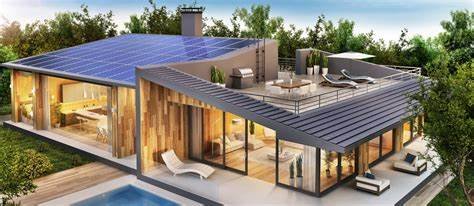
As the world increasingly embraces eco-conscious living, senior housing communities are making strides to adopt sustainable practices. With energy-efficient building designs and water conservation efforts, these communities not only reduce their environmental impact but also enhance the quality of life for their residents. By prioritizing sustainability, senior living communities create comfortable and healthy spaces where you can thrive.
Eco-friendly senior living spaces focus on integrating natural and sustainable practices that improve air quality and utilize resources wisely. Simple actions, such as using sustainable materials and non-toxic cleaning products, play a significant role in creating a healthier living environment. These measures contribute to your well-being and the overall health of our planet.
The transition to green practices enhances the livability of senior housing. By incorporating wellness habits and environmentally friendly strategies, you can enjoy an active lifestyle while feeling at home within your community. Sustainable senior living encompasses not just the physical environment but also the sense of comfort and belonging it fosters, offering a holistic approach to a fulfilling life in your golden years.
Designing Eco-Friendly Senior Housing
Creating eco-friendly senior housing involves integrating energy efficiency, natural elements, and sustainable materials. These components not only reduce environmental impact but also enhance the comfort and well-being of residents.
Energy Efficiency in Architectural Design
Incorporating energy-efficient designs is crucial for sustainable senior housing. Utilizing passive solar design can significantly reduce heating and cooling costs. By strategically positioning buildings and windows, you can maximize natural light and heat during winter while minimizing heat gain in summer.
Advanced insulation materials can reduce energy consumption further. These materials help maintain a stable indoor temperature, decreasing the need for artificial heating and cooling. Energy-efficient appliances and LED lighting can also contribute to reducing electricity usage, resulting in lower energy bills and a smaller carbon footprint.
Incorporating Natural Elements
Integrating natural elements like indoor plants and natural light is vital for creating a nurturing environment. Large windows and skylights can flood spaces with daylight, reducing the need for artificial lighting while boosting mood and well-being. Access to outdoor spaces or gardens encourages outdoor activities, which are beneficial for physical and mental health.
Biophilic design principles, including the use of plants and water features, can create a calming atmosphere. These elements improve air quality and promote relaxation, fostering a connection with nature. Designing spaces that accommodate these elements can greatly enhance the living experience for seniors.
Material Selection for Sustainability
Selecting sustainable materials is essential for eco-friendly construction. Materials such as bamboo, reclaimed wood, and recycled metal are both durable and renewable, making them ideal for construction. Choosing low-VOC paints and finishes is crucial to maintain indoor air quality and prevent exposure to harmful chemicals.
Non-toxic cleaning products are also important in maintaining a healthy environment. The use of such products reduces the risk of respiratory issues and chemical sensitivities, which is particularly important for senior residents. Emphasizing sustainability in material choice not only supports environmental goals but also ensures a healthier living space for residents.
Health, Comfort, and Wellbeing
In eco-friendly senior housing, enhancing resident health, comfort, and wellbeing involves thoughtful design. By creating ergonomic living spaces, providing accessible outdoor areas, and ensuring mobility-friendly layouts, these spaces promote a healthier, more enjoyable lifestyle.
Ergonomic Living Spaces
Designing ergonomic living spaces is crucial for senior residents. You will find furniture designed to reduce strain, incorporating adjustable heights, and supportive seating. These features are essential for maintaining independence and reducing physical stress. Proper lighting impacts your comfort and safety, so you’ll notice well-placed windows and strategically located artificial light sources to minimize glare and improve visibility.
Temperature control is an equally significant aspect. Heating and cooling systems are often designed to ensure comfort and energy efficiency. This balance supports both physical comfort and sustainability.
Outdoor Spaces and Community Gardens
Access to nature plays a vital role in reducing stress and enhancing wellbeing. Many eco-friendly senior facilities include outdoor spaces and community gardens. You might find pathways designed for easy navigation, benches for resting, and raised garden beds. They encourage social interactions and offer a peaceful environment for reflection or leisurely activities.
These gardens often use native plants, which require less water and maintenance, aligning with sustainable living goals. By spending time outdoors, you’re likely to experience the mental health benefits that come from connecting with the natural environment.
Accessible Design for Mobility
Mobility considerations are essential in senior living. Hallways, doorways, and rooms are often designed wide enough to accommodate wheelchairs and walkers. Look for features such as lever handles instead of doorknobs, ensuring easier access for residents with limited dexterity.
Ramps and elevators replace stairs to provide unhindered movement throughout the facility. Bathrooms are equipped with grab bars, non-slip flooring, and walk-in showers for enhanced safety. This attention to accessible design ensures you can move around comfortably, maintaining independence while reducing the risk of accidents.







